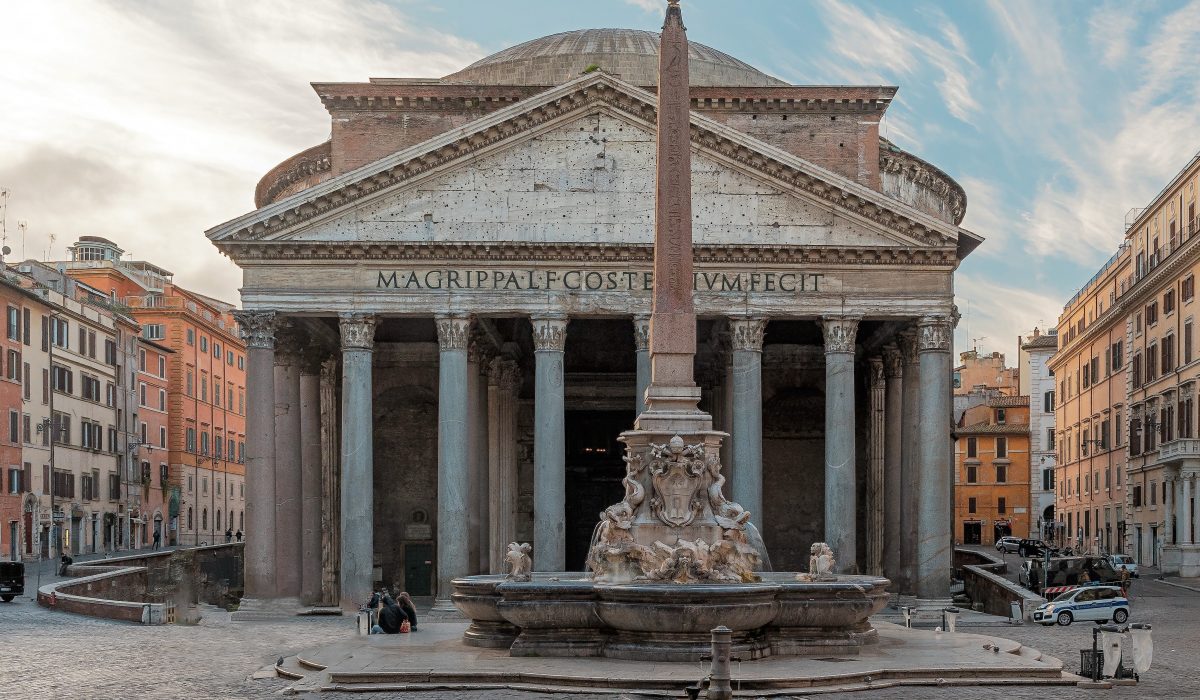The Pantheon: Rome’s Timeless Marvel

Rome, the Eternal City, is an emblematic tapestry of history, culture, and architecture. Of its many timeless monuments, the Pantheon stands out as one of the most preserved and influential among the ancient Roman buildings. The Pantheon has inspired countless architects and remains a testament to Roman engineering and artistry.
1. The Historical Canvas of the Pantheon
Built on the site of an earlier temple commissioned by Marcus Agrippa during the reign of Augustus (27 BC – 14 AD), the current Pantheon was completed by Emperor Hadrian around 126 AD. Over its long history, the Pantheon has served various purposes. Originally a temple dedicated to all the gods of pagan Rome, it was later converted into a Christian church in the 7th century and is now known as the Basilica of Santa Maria ad Martyres. Such a diverse history has ensured its survival and protection through the centuries.
The building’s name, “Pantheon”, is derived from the Ancient Greek words “pan” (all) and “theion” (divine), meaning “of all the gods.” Although dedicated to all gods, there’s still some mystery about how the Romans originally used the Pantheon. Regardless, it’s evident that it was a place of immense importance and reverence.
2. Architectural Mastery: The Dome and Oculus
The Pantheon’s most iconic feature is undoubtedly its magnificent dome. For over a thousand years, this dome was the largest in the world, with a diameter that still impresses at 43.3 meters (142 feet). The ingenuity lies not just in its size but also in its design. The thickness of the dome decreases as it reaches the top, ensuring structural integrity while reducing the weight. Additionally, the incorporation of coffers (sunken panels) further lessens its weight without compromising its stability.
At the very top of this dome is the oculus, a 9-meter (about 30 feet) opening that is the sole source of natural light for the Pantheon. The oculus serves both a practical and symbolic role. Beyond lighting, it creates a unique play of light and shadow within the interior, and rainwater that enters through the oculus is effectively drained away by the slightly convex floor.
Symbolically, the oculus can be interpreted in various ways: a connection between the temple and the heavens, the “all-seeing eye” of the heavens, or a representation of the sun itself.
3. Influence and Legacy
The Pantheon’s architectural brilliance has had a lasting influence on Western architecture. From the Renaissance to modern times, many buildings have drawn inspiration from their design. The Pantheon’s portico with its large granite Corinthian columns and its harmonious proportions has been imitated in numerous structures around the world.
Renowned architects like Brunelleschi, who designed the dome of the Florence Cathedral, looked to the Pantheon for inspiration. Similarly, Thomas Jefferson, both an architect and the third U.S. president, modeled the rotunda of the University of Virginia after the Pantheon.
Beyond architecture, the Pantheon also serves as the final resting place for several prominent figures, including Renaissance artist Raphael and two kings of Italy.
Final Words
In conclusion, the Pantheon is not just a monument of ancient Rome; it is an enduring symbol of architectural genius, a bridge between the ancient and modern worlds, and a testament to humanity’s quest for grandeur and divinity. For anyone visiting Rome, it remains a must-visit, a place where one can feel the weight of history and the timelessness of design.
If you are going to Rome soon, buy your tickets for this beautiful building at pantheon-tickets.com.

